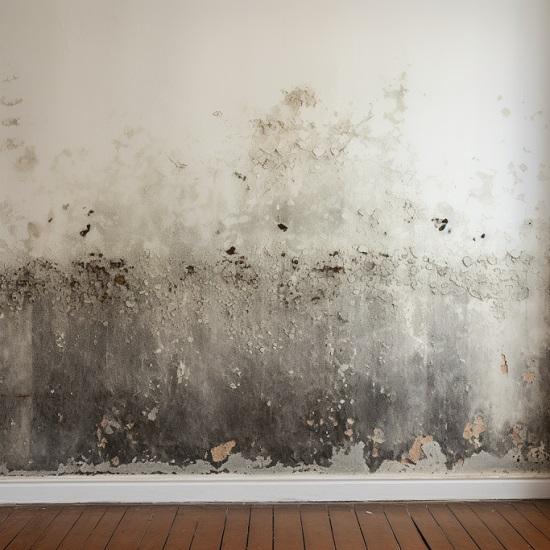Testing Air Quality After Mold Remediation
Testing Air Quality After Mold Remediation
Blog Article
Your Ultimate Guide to Post Mold And Mildew Remediation Methods
Browsing the realm of post-mold remediation methods is a careful process that requires attention to information and a comprehensive understanding of the complexities entailed. In the after-effects of mold and mildew infestation, knowing exactly how to efficiently eradicate the mold and stop its reoccurrence is paramount for maintaining a healthy and balanced indoor atmosphere. From selecting the right cleansing and disinfecting approaches to executing techniques for long-term mold prevention, each action in the removal journey plays an important duty in making certain a successful outcome. As we embark on this expedition of post-mold removal strategies, we will certainly discover the vital approaches and ideal methods that can assist you recover your space to its pre-mold problem and secure it versus future mold and mildew hazards.
Comprehending Post-Mold Remediation Refine
After completing the mold and mildew remediation procedure, it is essential to recognize the post-mold removal techniques that are needed to ensure a effective and extensive clean-up. When the mold and mildew has been removed, the next step involves cleansing and decontaminating the affected areas to prevent any regrowth of mold and mildew.
Furthermore, performing a final examination post-remediation is essential to guarantee that all mold has been efficiently removed. This evaluation must include a thorough visual check as well as possibly air sampling to verify the lack of mold and mildew spores in the air. Extra remediation might be necessary if the assessment exposes any type of lingering mold and mildew. Finally, educating occupants on preventive steps such as regulating moisture levels and promptly addressing any type of water leakages can aid maintain a mold-free environment.
Reliable Cleansing and Sanitizing Approaches

Protecting Against Future Mold Development

Relevance of Correct Ventilation
Appropriate ventilation plays a critical function in avoiding dampness buildup, a key variable in mold and mildew growth within indoor settings. Reliable ventilation systems assist get rid of excess humidity from the air, lowering the opportunities of mold and mildew spores locating the moisture they need to spread and germinate. Without sufficient ventilation, interior areas can come to be a breeding place for mold and mildew, causing prospective health threats and architectural damages.
By making sure appropriate air blood circulation, air flow systems can also assist in drying wet areas quicker after water damages or flooding incidents, further deterring mold and mildew development. After mold remediation. Precede like washrooms, attics, cellars, and kitchens where wetness levels often tend to be greater, installing and preserving efficient ventilation systems is crucial in stopping mold and mildew problems

Monitoring and Maintenance Tips
Offered the essential duty that correct ventilation plays in preventing mold development, it is vital to establish reliable surveillance and upkeep suggestions to make sure the continued capability of ventilation systems. Routine evaluations of ventilation systems need to be performed to inspect for any kind of signs of clogs, leaks, or malfunctions that could hamper proper airflow. Surveillance moisture levels within the residential property is additionally crucial, mold removal on deck as high humidity can contribute to mold development. Installing a hygrometer can help track moisture levels and sharp homeowners to any kind of spikes that may require interest. Additionally, guaranteeing that air filters are regularly cleaned or replaced is essential for maintaining the effectiveness of the air flow system. Carrying out a schedule for regular maintenance jobs, such as air duct cleansing and heating and cooling system assessments, can help prevent problems prior to they escalate. By remaining aggressive and alert to the problem of ventilation systems, homeowner can effectively reduce the danger of mold regrowth and maintain a healthy and balanced indoor atmosphere.
Final Thought
Finally, post-mold remediation strategies are necessary for making certain a tidy and safe setting. Recognizing the process, executing effective cleansing and disinfecting approaches, protecting against future mold growth, keeping proper ventilation, and normal surveillance are all important steps in the removal procedure. By adhering to these standards, you can efficiently eliminate mold and prevent its return, functioning or advertising a healthy living space for all occupants.
In the after-effects of mold problem, knowing how to efficiently get rid of the mold and mildew and prevent its reoccurrence is extremely important for preserving browse this site a healthy interior setting. When the mold and mildew has actually been eliminated, the next action includes cleaning and decontaminating the impacted areas to stop any type of regrowth of mold and mildew - Post Mold remediation cleaning. After removing visible mold growth, it is vital to clean all surface areas in the affected location to eliminate any type of remaining mold and mildew spores. To further improve mold and mildew prevention measures, it is crucial to attend to underlying concerns that originally led to mold development.Offered the crucial function that proper ventilation plays in protecting against mold and mildew growth, it is essential to establish efficient monitoring and maintenance tips to guarantee the ongoing performance of air flow systems
Report this page